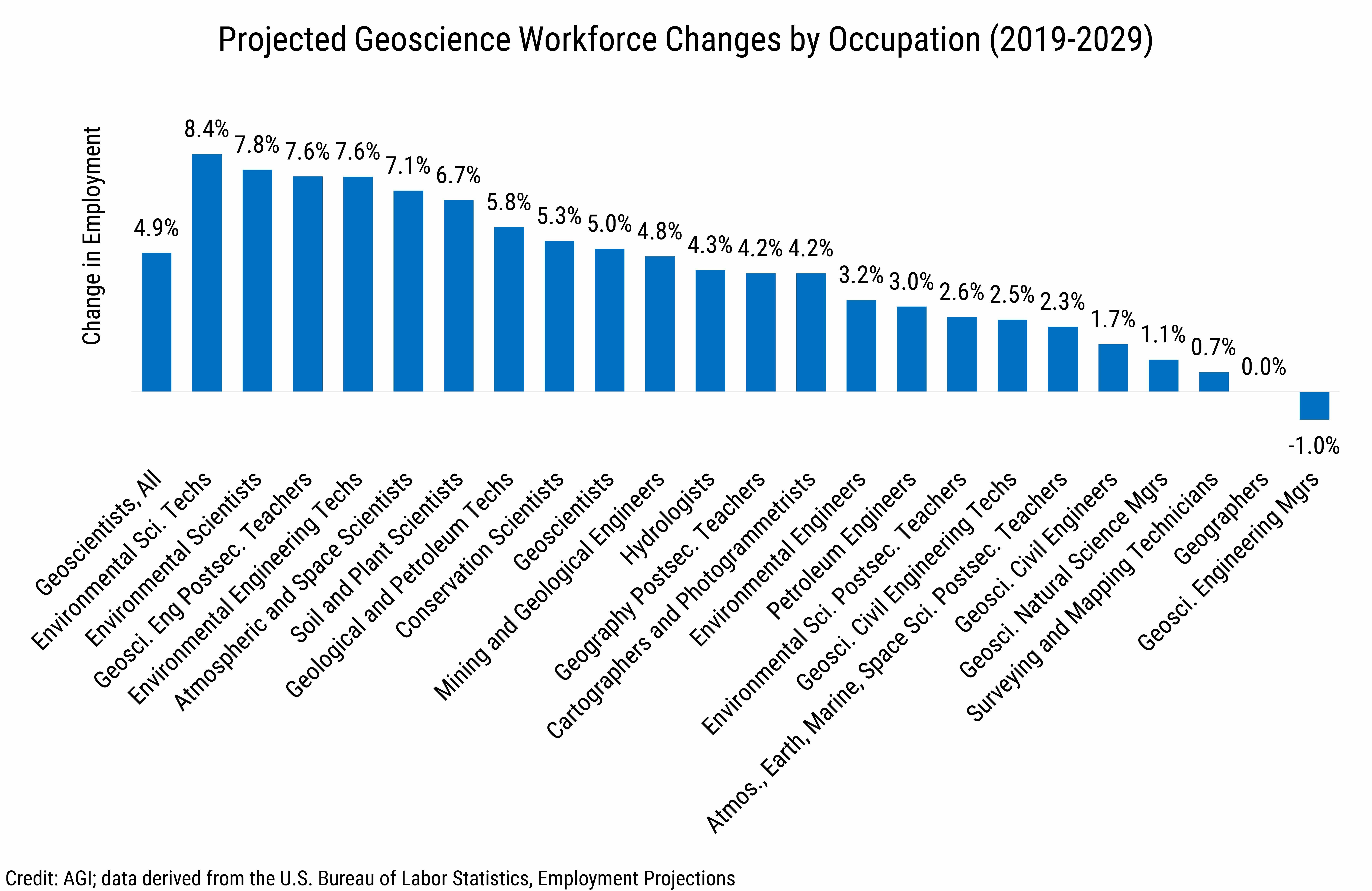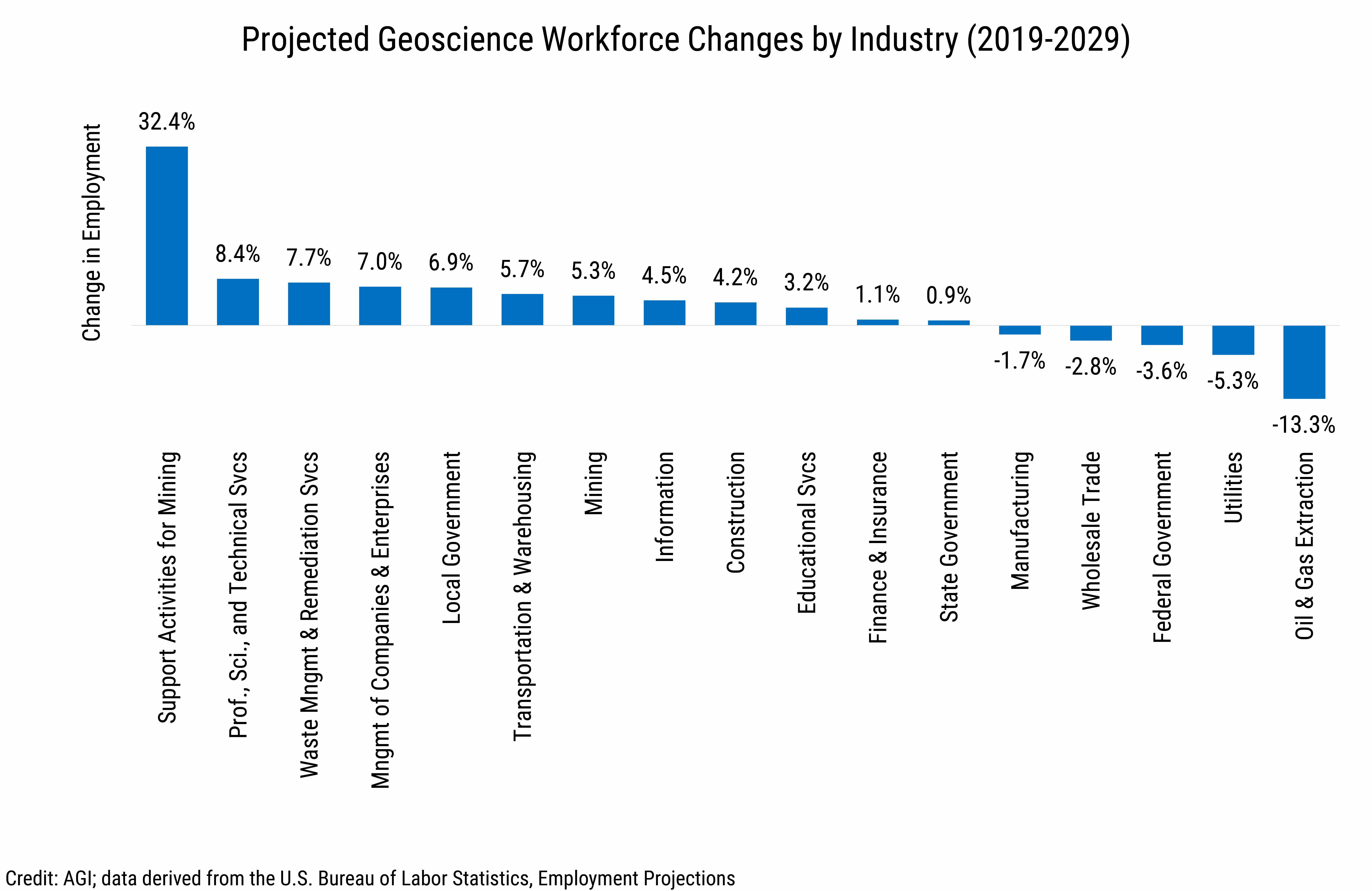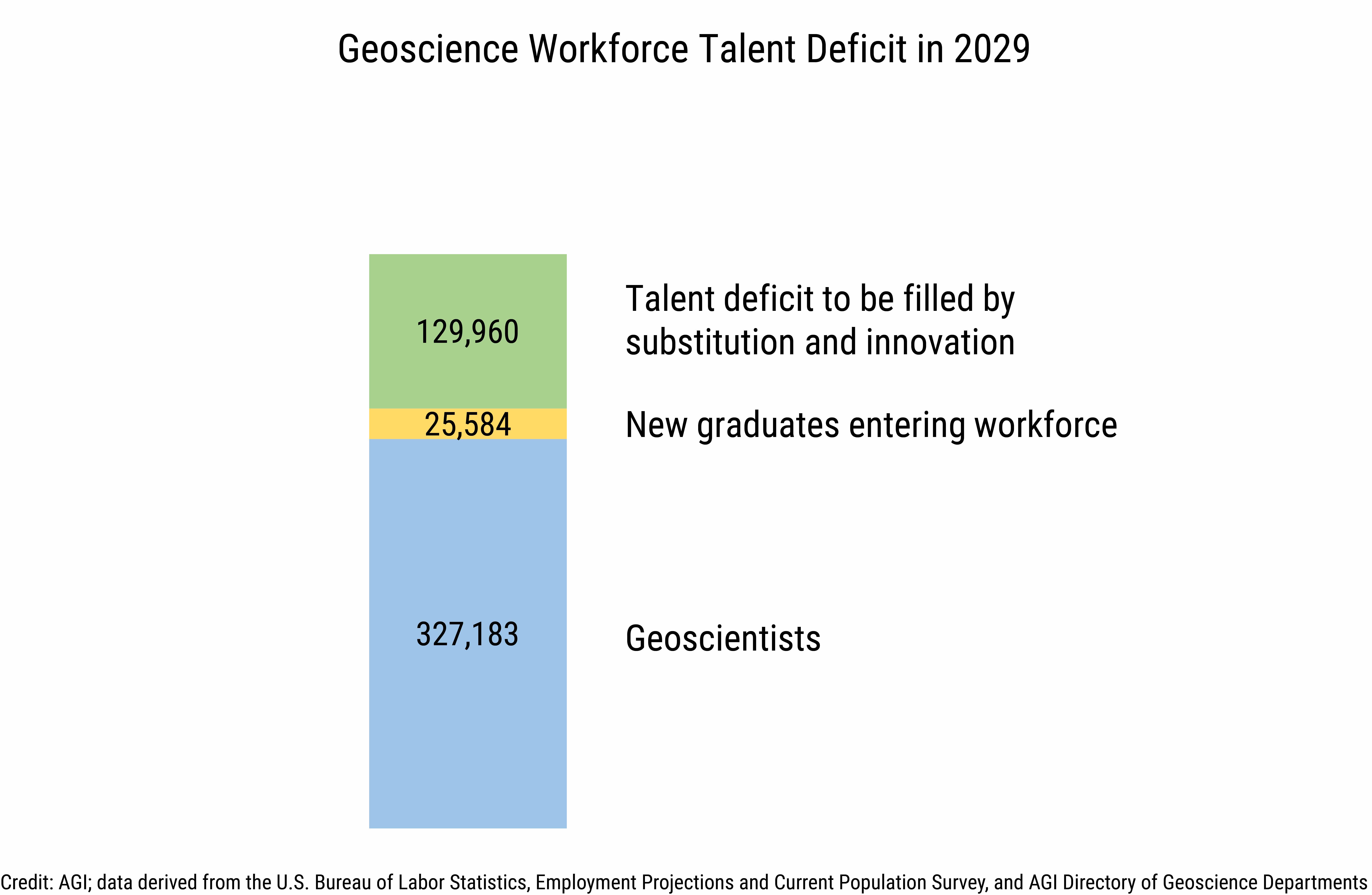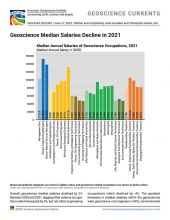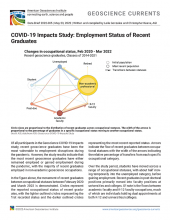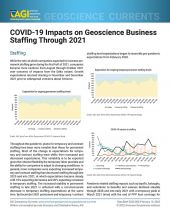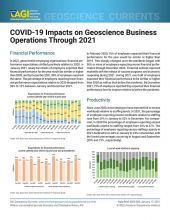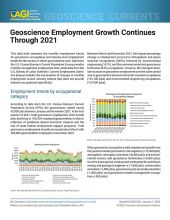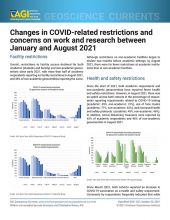Geoscience workforce expected to grow by 4.9%
Employment projections from the U.S. Bureau of Labor Statistics (BLS) indicate an overall 4.9% increase in geoscience jobs between 2019 and 2029, from 460,242 jobs in 2019 to 482,726 jobs in 2029. For comparison, the projected growth of the U.S. workforce over the same timeframe is expected to be 3.7%. While growth rates for individual geoscience occupations range between 0% and 8.4% for all but geoscience engineering managers (-1%), those occupations projected to gain the greatest number of jobs are environmental scientists (7,100 jobs), environmental science technicians (2,900 jobs), and environmental engineers (1,800 jobs).
The majority of geoscience job growth over the coming decade will be within the professional, scientific and technical services sector where 39% of geoscientists currently work. This sector is projected to gain just over 16,000 jobs between 2019 and 2029, an 8.4% increase over this period. The support activities for mining sector which includes oil and gas support activities, currently employs approximately 2% of geoscientists and is expected to grow by 32% gaining just over 3,500 jobs.
Of those industries projected to see a decline in total geoscience employment between 2019 and 2029, the oil and gas extraction industry is projected to contract the most with a reduction of just over 2,800 jobs, followed by the federal government which is projected to shed just over 1,000 jobs. The utilities, wholesale trade, and manufacturing sectors are projected to shed a total of 700 jobs by 2029.
Based on the age demographics of the current geosciences workforce as identified by the BLS, with an average retirement age of 65, then 27% of the existing geoscience workforce will be retiring by 2029. The number of geoscience graduates entering the workforce each year will not be sufficient to fill the gap created by these retirements and the addition of over 22,000 new jobs that are projected to be created in the profession by 2029. As a result, the expected geoscience workforce deficit will be approximately 130,000 full-time equivalent geoscientists by 2029.
Full employment in the geosciences is expected to continue over the coming decade and we expect there will be a continued increase in the use of innovative technologies such as artificial intelligence and machine learning to fill the expected talent gap by increasing workplace efficiencies.


